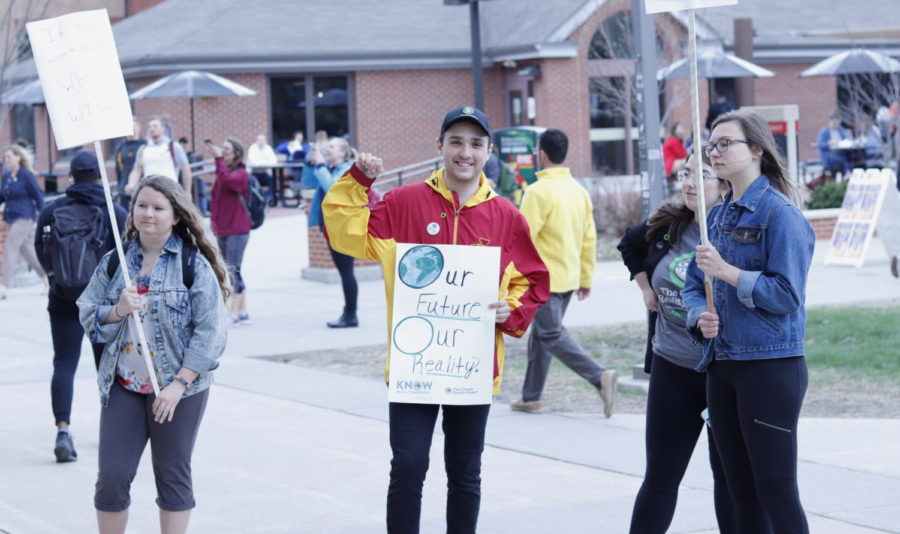The Agora space on campus used to exchange ideas
Iowa State has several designated “free speech zones”, but these do not mean free speech is limited to these areas.
March 26, 2020
What is commonly referred to as the “Free Speech Zone” on campus, many students think of the area outside of Parks Library and south of The Hub. What is important to remember about Iowa State’s free speech policy is that under the First Amendment, Iowa State cannot and does not limit free speech to certain areas on campus.
The Free Speech Zone on campus is actually called the “Agora Space.” The other Agora space on campus is south of the Campanile. These spaces have been recognized as one of the most optimal places for students and community members to exchange ideas and prioritize safety and education above all else, which will make the safety regulations easiest to abide by.
“From a legal perspective, when you are at a public institution, you cannot delegate areas as free speech zones,” said Julie Roosa, adjunct assistant professor in the Greenlee School Journalism and Communication. “In theory, the entire campus, because it is a public institution, is a free speech zone where free speech can happen.”
The Free Speech Zone is kind of a misnomer, it just comes from people using terminology that isn’t really accurate. According to Iowa State policy and the First Amendment, free speech can take place anywhere, with few exceptions, Roosa said.
The university does have the ability to put in regulations to ensure safety and education are prioritized. This includes limitations like time of day, gatherings that are going to solicit a crowd of 50 or more and no entrance blocking and certain restricted areas, like areas that have been reserved for an event or would cause major disruption. These regulations can vary dependent on where the person is on campus and if they are using things like signs, megaphones or garnering a large crowd. You can view Iowa State’s complete First Amendment policy at http://www.policy.iastate.edu .
“There are certain times of the day that people are permitted to do their thing, that’s OK because it’s a content neutral restriction that is designed to protect the campus and regulate comings and goings of people in order to achieve the goal of educating students,” Roosa said. “The university can put time limits on it as long as it is enforced across the board, not on one select group.”
The first area on campus that was recognized as a Free Speech Zone was outside Carver Hall. This was called the Edward Allen Area of Free Debate, according to Sam Clement, junior in history at Iowa State. Clement researched the history of free speech zones on campus for his honors project last year. According to his research, this is the first space recognized as a free speech zone.
“The Hub was a better area for people to congregate because there would be more freedom of movement,” Clement said. “In the Carver Plaza, it’s much harder to get by if there is a crowd.”
Catt Hall was also highlighted in his research of free speech on campus, as it was contested when the name changed in 1995 after suffragette Carrie Chapman Catt. In 1996 there were physical protests outside Catt Hall.
The Campanile is also recognized as an Agora space on campus. The Campanile is ideal because of its open area but less foot traffic than the area south of The Hub.
The Agora space is used by students and community members alike for different reasons and purposes. On any given day you might walk out of the library and be given a button, sticker or pamphlet that introduces you to a new idea.







